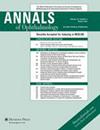Exfoliation Syndrome
引用次数: 36
Abstract
planners of eye care programmes in leprosy management, and further similar studies elsewhere would provide additional helpful information. Since the early 1990s, much has been done to reduce leprosy related eye pathology to current levels. The difficulty is often in maintaining the momentum of eye care strategies. There is a need for (1) adequate numbers of ophthalmologists trained in leprosy, with a teaching as well as a clinical remit; (2) adequate numbers of ophthalmic trained nursing and paramedical personnel; (3) adequate measures for continuing education of paramedical personnel, maintaining and increasing their ophthalmic clinical examination and diagnostic skills; (4) adequate ongoing health education of patients and the vulnerable public regarding the eye complications of leprosy and the need for early diagnosis. It is known that, at present, the main cause of blindness in leprosy is cataract. Although, in some instances, other ocular pathology coexists, most patients gain some improvement in visual acuity with cataract surgery (unless obvious contraindications are present). Resources allocated to dealing with this backlog of patients, and to other blindness prevention strategies in leprosy, would reduce the need for longer term resource allocation to care of the visually handicapped or blind, as well as improving the quality of life and possibly restoring economic and social independence for many. The World Health Organization’s aim to eliminate leprosy as a public health problem, by bringing the prevalence down to less than one per 10 000 by the year 2000 was not achieved in a number of countries, where it has been extended to 2010. The focus is now, perhaps rightly, on AIDS which is numerically a larger problem, and one with a rapidly increasing prevalence and a high mortality rate. However, to prematurely consign leprosy to the history books guarantees unnecessary future morbidity, including blindness, with inadequate knowledge and resources to manage it effectively.去死皮综合症
本文章由计算机程序翻译,如有差异,请以英文原文为准。
求助全文
约1分钟内获得全文
求助全文

 求助内容:
求助内容: 应助结果提醒方式:
应助结果提醒方式:


